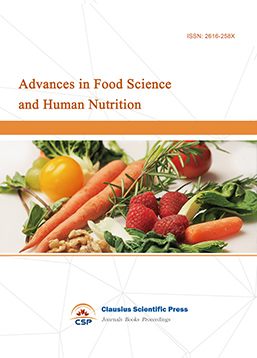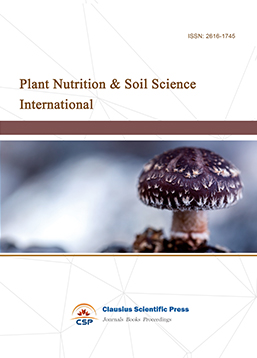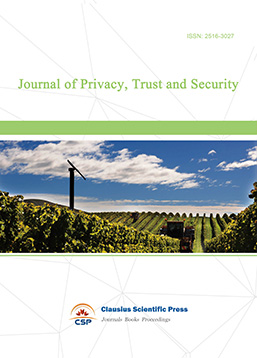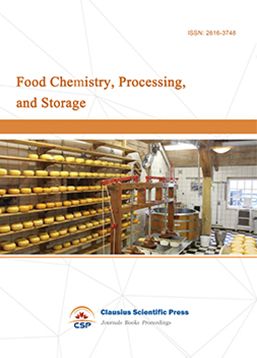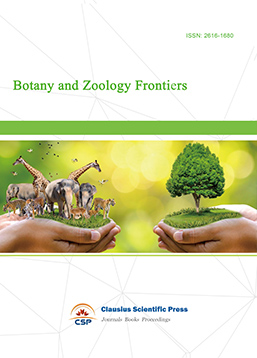Identification and Research of Winter Wheat in Loess Plateau Based on Multi-Temporal Vegetation Index Model
DOI: 10.23977/jmcs.2023.020101 | Downloads: 24 | Views: 2288
Author(s)
Yujie Niu 1,2, Yongming Yang 1,2
Affiliation(s)
1 College of Land and Resources Engineering, Kunming University of Science and Technology, Kunming, Yunnan, 650031, China
2 College of Earth Science and Engineering, West Yunnan University of Applied Sciences, Dali, Yunnan, 671000, China
Corresponding Author
Yongming YangABSTRACT
The key factor affecting the planting monitoring of winter wheat is the interference of crops at the same time, which will cause the problem of data inconsistency between the winter wheat planting area obtained by remote sensing technology and the cultivated land planting area statistics. Therefore, accurate and efficient rapid acquisition of cultivated land planting monitoring information is of great significance for ensuring food and agriculture security, grain yield estimation, and area estimation in the study area. At present, there are few studies on winter wheat cultivated land area extraction in the Loess Plateau by using the construction of multitemporal vegetation index synthesis model, the change characteristics of winter wheat index, and the separability of cultivated land image information. We use Sentinel-2 data to study through a multitemporal vegetation index synthesis model. In this research, we estimated the planting area of winter wheat cultivated land extracted by the vegetation index model from 2020 to 2021, and studied the correlation between the multitemporal index model and winter wheat on the Loess Plateau. The separability of multitemporal normalized vegetation index model for winter wheat and concurrent crops was also discussed. The result shows that: (1) By using the multitemporal NDVI model composed of overwintering stage, jointing stage, and Milk-Ripening stage, the accuracy of the total cultivated area of winter wheat reached 96.80%, the overall accuracy was about 94.26%, and the Kappa coefficient was 0.89, which ensured the consistency between the cultivated area of winter wheat and the actual total planted area in the Loess Plateau and the accuracy of winter wheat remote sensing monitoring. (2) The results of multitemporal NDVI vegetation index model extraction of winter wheat planting area showed that the NDVI values of winter wheat were clearly different under different terrain in the same growing period and susceptible to the interference of crops in the same period. We found that the multitemporal NDVI index model could effectively reduce the interference of rapeseed and forestland growing at the same time on the planting area of winter wheat, and enhance the separability of winter wheat planting area. Overall, based on Sentinel-2 data and using the multi-period NDVI index synthesis model, we accurately obtained the area of planting area, which proved that the model can be effectively applied to winter wheat in the Loess Plateau, and provided data support for the remote sensing planting monitoring of winter wheat in the local area.
KEYWORDS
Vegetation Index (VI), The Loess Plateau, Winter Wheat, Multi-temporal Vegetation Index Image Fusion Model, Sentinel-2CITE THIS PAPER
Yujie Niu, Yongming Yang, Identification and Research of Winter Wheat in Loess Plateau Based on Multi-Temporal Vegetation Index Model. Journal of Modern Crop Science (2023) Vol. 2: 1-11. DOI: http://dx.doi.org/10.23977/jmcs.2023.020101.
REFERENCES
[1] Yu Xinhua, Zhao Weiqing, Zhu Zaichun, et al. (2021) Multi-scale winter wheat yield estimation based on remote sensing and crop growth model. Spectroscopy and spectral analysis, ,41 (07): 2205-2211
[2] Hu Y, Ma P, Wu S, et al. (2020) Spatial-temporal distribution of winter wheat (Triticum aestivum L.) root and water use efficiency under ridge–furrow dual mulching. Agricultural Water Management, 240:106301-.
[3] Hou Huizhi, Gao Shiming, Zhang Xucheng, Wang Degui. (2016) Effects of whole film microfurrow on water consumption characteristics and water use efficiency of winter wheat in semi-arid region of Northwest Loess Plateau. Chinese Journal of Agricultural Sciences, (24):4701-4713.
[4] Xiong Yuankang, Zhang Qingling. (2019) Extraction of agricultural planting structure in the North Slope of Tianshan Mountains based on NDVI time series image. Arid Land Geography, (05):1105-1114.
[5] Li Changchun, Chen Weinan, Wang Yu et al. (2021) Extraction of winter wheat planting area based on multisource Sentinel data. Transactions of the Chinese Society for Agricultural Machinery, (12):207-215.
[6] Wu S, Lu H, Guan H, et al. (2021) Optimal Band Combination Selection for Extracting Garlic Planting Area with Multi-Temporal Sentinel-2 Imagery.. Sensors (Basel, Switzerland), 21(16).
[7] Yang N, Liu D, Feng Q, et al. (2019) Large-Scale Crop Mapping Based on Machine Learning and Parallel Computation on Grids. Remote Sensing, 11(12):1500.
[8] Li Baihong, Peng Bo, Dong Chao. (2021) Research on cultivated land extraction method of wheat rotation based on time series characteristics. Journal of Anhui Agricultural Sciences, (19):214-217.
[9] Guo Wenqian, Ren Jianqiang, Liu Xingqian, et al. (2018) Winter wheat distribution mapping with global optimization threshold constrained by total statistical data. Journal of Remote Sensing, (06):1023-1041.
[10] Li Z, Xiong F. (2021) Extraction of Crop Planting Structure in County Based on Multi-temporal Images of Sentinel-2. IOP Conference Series Earth and Environmental Science, 632:052031.
[11] Liu Jia, WANG Limin, Yang Fugang, YAO Baomin, Yang Lingbo. (2019) Mapping of winter wheat in China based on GF-1 satellite image. Chinese Agricultural Science Bulletin, 35(09):155-164. (in Chinese)
[12] Zhou Tao, Pan Jianjun, Han Tao et al. (2017) Planting area Extraction of winter wheat based on multitemporal SAR and optical image. Transactions of the Chinese Society of Agricultural Engineering, (10):215-221.
[13] Zhao Shiqiang, Yan Jinfeng, Du Jiaxue. (2022) Sentinel-2A image cultivated land information extraction based on object-oriented stochastic forest model. Journal of Henan Polytechnic University (Natural Science Edition), (07)1-11.
[14] Bai Yanying, GAO Julin, ZHANG Baolin. (2019) Extraction of crop planting structure based on Landsat8 image time series NDVI. Arid Land Geography, 42(04):893-901.
[15] Zhou Jingping, Li Cunjun, Shi Leigang et al. (2016) Crop distribution information Extraction based on Decision Tree and Object-Oriented Remote Sensing. Transactions of the Chinese Society for Agricultural Machinery, (09): 318-326+333.
[16] Qin Huijie, Wang Zongwei, Chen Cheng et al. (2021) Autumn crop extraction in Dongtai City based on sequence image. Journal of Anhui Agricultural Sciences, (15):227-231.
[17] Yang Huan, Deng Fan, Zhang Jiahua et al. (2020) Study on planting Information extraction of Rapeseed and winter wheat based on MODIS EVI in Jianghan Plain. Remote Sensing of Land and Resources, (03):208-215.
[18] Zhang Sha, Zhang Jiahua, Bai Yun et al. (2018) Extraction of winter wheat area in Huang-Huai-hai Plain based on MODIS-EVI and phenological difference exemption threshold. Transactions of the Chinese Society of Agricultural Engineering, (11):150-158.
[19] Jiang Nan, Zhang Xuehong, WEN Jianlong, et al. (2021) Extraction method of rape planting distribution area based on Gaofen-6 wide-width image. Journal of Geo-Information Science, (12):2275-2291.
[20] Ma Jingjing, Yuan Jinguo. (2014) Relationship between vegetation NDVI and observed zenith angle and LAI based on model simulation. Remote Sensing Technology and Application, (04):539-546.
[21] Duan M, Zhang X. (2021) Using remote sensing to identify soil types based on multiscale image texture features. Computers and Electronics in Agriculture, 187:106272-.
| Downloads: | 698 |
|---|---|
| Visits: | 55241 |

 Download as PDF
Download as PDF